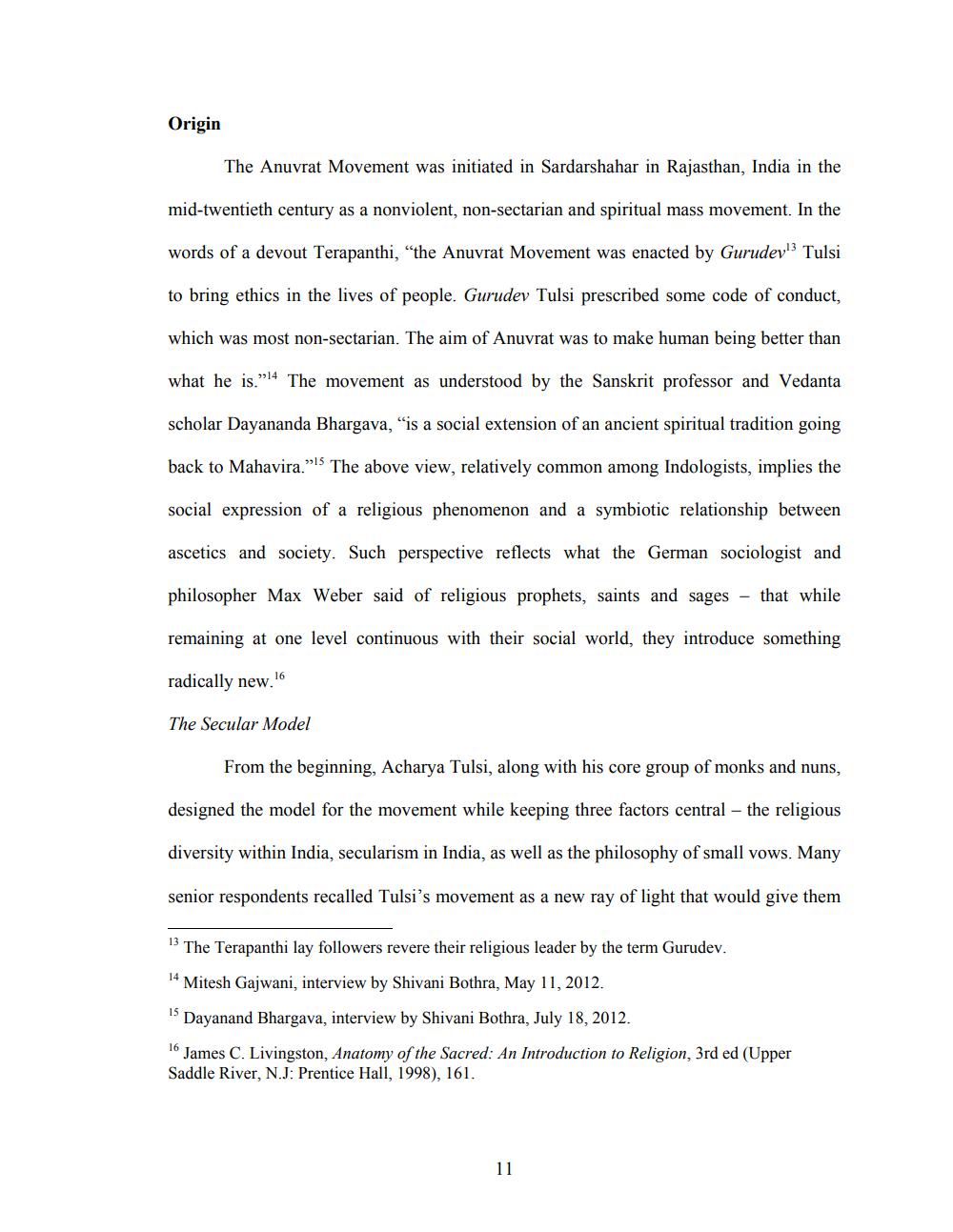________________
Origin
The Anuvrat Movement was initiated in Sardarshahar in Rajasthan, India in the
mid-twentieth century as a nonviolent, non-sectarian and spiritual mass movement. In the
words of a devout Terapanthi, the Anuvrat Movement was enacted by Gurudev Tulsi
to bring ethics in the lives of people. Gurudev Tulsi prescribed some code of conduct,
which was most non-sectarian. The aim of Anuvrat was to make human being better than
what he is."!4 The movement as understood by the Sanskrit professor and Vedanta
scholar Dayananda Bhargava, "is a social extension of an ancient spiritual tradition going
back to Mahavira."15 The above view, relatively common among Indologists, implies the
social expression of a religious phenomenon and a symbiotic relationship between
ascetics and society. Such perspective reflects what the German sociologist and
philosopher Max Weber said of religious prophets, saints and sages – that while
remaining at one level continuous with their social world, they introduce something
radically new.16
The Secular Model
From the beginning, Acharya Tulsi, along with his core group of monks and nuns,
designed the model for the movement while keeping three factors central - the religious
diversity within India, secularism in India, as well as the philosophy of small vows. Many
senior respondents recalled Tulsi's movement as a new ray of light that would give them
1 The Terapanthi lay followers revere their religious leader by the term Gurudev.
14 Mitesh Gajwani, interview by Shivani Bothra, May 11, 2012.
15 Dayanand Bhargava, interview by Shivani Bothra, July 18, 2012.
16 James C. Livingston, Anatomy of the Sacred: An Introduction to Religion, 3rd ed (Upper Saddle River, NJ: Prentice Hall, 1998), 161.




